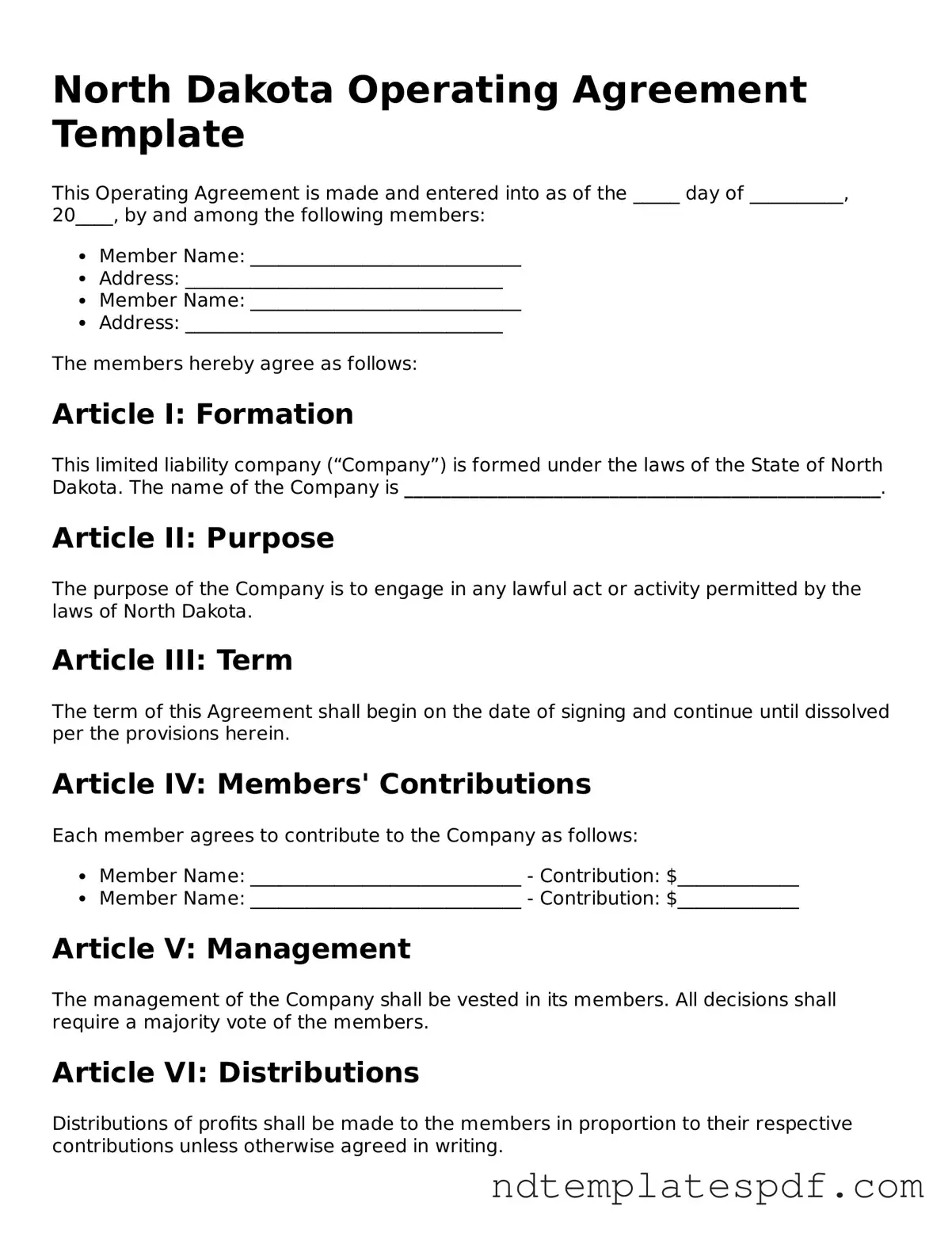Legal North Dakota Operating Agreement Document
The North Dakota Operating Agreement form is a legal document that outlines the management and operational procedures for a limited liability company (LLC) in North Dakota. This form serves as a foundational agreement among members, detailing their rights, responsibilities, and the overall structure of the LLC. Understanding this document is essential for ensuring compliance with state regulations and fostering effective business operations.
Fill Out Document Now
